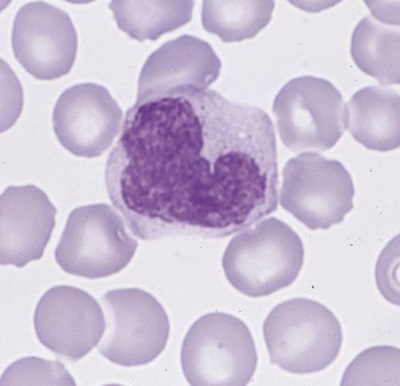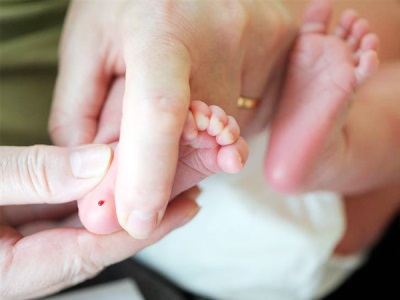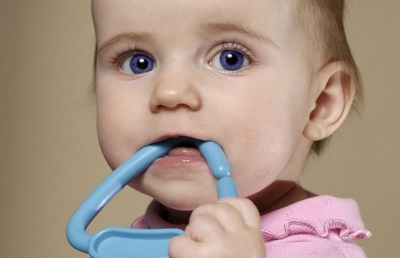Monocytes in the blood of children and their rate
Thanks to the clinical analysis of blood in children, it is possible to diagnose and treat both minor ailments and serious pathologies in time. One of the main indicators of this research is leukocyte formula. It displays the percentage of different types of white blood cells, among which are monocytes. What kind of cells are these? What level should a child have in a normal state and what should be done when monocytes change in the blood of children?
The role of monocytes
The most important for maintaining the health of the child are young monocytes that have just come out of the bone marrow.
Monocytes are needed for:
- Blood purification and its updates.
- Protection of the child's body from parasites and harmful microorganisms.
- Removal of tumor cells.
- Removal of its own dead tissue, which improves regeneration processes.
For such functions, monocytes are jokingly called "body wipers," so their normal amount is so important for children's health. In order to destroy microbes, parasites, and other alien agents in the body of babies, monocytes are transformed into cells called macrophages.
How and when determine monocytes in children
In childhood, the level of monocytes is determined during the complete blood count, which must be present leukogram. The number of monocytes is indicated as a percentage of all white blood cells. His assessment is important to identify the active pathological process in children.
The child is sent for this analysis:
- Plan once a year to prevent the development of pathologies and identify hidden processes.
- If you have complaints about which the doctor suspects an infectious process or another serious disease.
- With the emergence of complications of the underlying disease.
- With long-term medication.
- When exacerbation of a child of chronic disease.
- Before performing surgery.
- To assess the effectiveness of the treatment prescribed to the child.
- Before vaccination if indicated.
Blood for analysis, determining the leukogram and the percentage of monocytes, taken mainly from the finger. In rare cases, the fence is taken from a vein, and babies that have just come into the world use blood from the heel.
Monocyte norm
To assess the rate of monocytes in a child’s blood, the age of the small patient is first taken into account. At different ages, the normal percentage of such white blood cells is called:
|
Newborns |
From 4% to 10% |
|
From the fifth day after birth |
From 6% to 14% |
|
In infants older than 1 month |
From 5% to 12% |
|
In children older than one year |
From 4% to 10% |
|
From the age of five |
From 4% to 6% |
|
From the age of 15 |
From 3% to 7% |
Changes in the level of monocytes in the blood
Above normal
If a child has a large percentage of monocytes that exceeds the norm for its age, this condition is called monocytosis. It is caused by a decrease in other types of leukocytes, and in this case, monocytosis is called relative. In a situation where leukocytes are elevated in a child’s blood by monocytes, this monocytosis is called absolute.
The most common causes of monocytosis in children:
- Autoimmune processes, such as lupus erythematosus.
- Infectious mononucleosis.
- Leukemia or polycythemia.
- Ulcerative and inflammatory diseases of the digestive tract.
- Poisoning with certain substances, including phosphorus and chlorine.
- Toxoplasmosis and other parasitic infections.
- Brucellosis.
- Fungal infection.
- Tuberculosis.
- Congenital syphilis.
- Purulent processes in the children's body.
- The recovery period when the child has had a cold or colds.
- Injury.
- Teething of molars or milk teeth.
- Severe bruise
- An individual feature (with it, monocytes will be slightly overstated, but the symptoms of the disease are not detected).
Having identified a higher percentage of monocytes in a child, it is important to consider the clinical manifestations (they will correspond to the underlying disease), past illnesses and other factors. After a more detailed examination, the child is given appropriate therapy, which will result in a normalization of the level of monocytes in the blood.
Below normal
The lower value of monocytes is called monocytopenia and detected in such cases:
- After surgical treatment or after injury.
- With exhaustion of the body.
- With radiation sickness.
- During chemotherapy.
- After the use of steroid drugs.
- For sepsis and other serious infections.
- With iron deficiency anemia.
- Under severe stress.
Having found a very low number of monocytes in the child’s blood, the doctor must evaluate other blood parameters, because such a phenomenon can occur when the number of neutrophils or other white blood cells is exceeded.
If monocytopenia was one of the symptoms of a disease, it is important to prescribe the child the correct treatment, as a result of which the well-being improves, and the blood test results will return to normal.
You can learn more about monocytes by watching the following video.
















